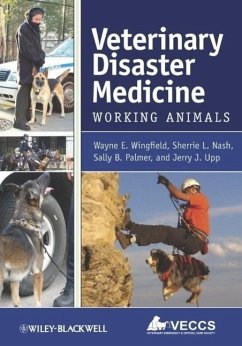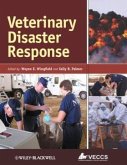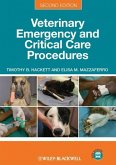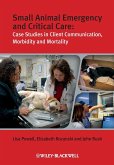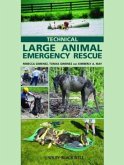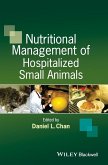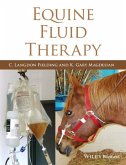Veterinary Disaster Medicine: Working Animals is a comprehensive guide to providing first aid to service dogs and horses. Covering both common and uncommon injuries ranging from exercise-related myopathy to bomb blasts, chemical injury, and biological agents, the book provides information necessary for triage, diagnosing, and treating service animals in the aftermath of a disaster. Presented in an easy-to-use outline format, Veterinary Disaster Medicine offers guidance for the veterinary medical responder prior to and following a disaster.
With chapters including first aid, triage, weapons of mass destruction, radiation injury, pathogens, and euthanasia, the book presents essential information for many potential disaster scenarios. Veterinary Disaster Medicine appeals to veterinarians, veterinary technicians, veterinary students, search and rescue personnel, and emergency response teams.
Hinweis: Dieser Artikel kann nur an eine deutsche Lieferadresse ausgeliefert werden.
With chapters including first aid, triage, weapons of mass destruction, radiation injury, pathogens, and euthanasia, the book presents essential information for many potential disaster scenarios. Veterinary Disaster Medicine appeals to veterinarians, veterinary technicians, veterinary students, search and rescue personnel, and emergency response teams.
Hinweis: Dieser Artikel kann nur an eine deutsche Lieferadresse ausgeliefert werden.
"It is a recommended reference for anyone who may find themselves with a need to deal with animals in
a disaster, whether by choice as a disaster responder or by chance as a clinician whose practice may become involuntarily part of a disaster scene. " (Vet Med Today, 15 June 2010)
"The outline format distills a great volume of information to key elements pertinent to natural disasters such as firestorms or floods or to intentional disasters such as bomb blasts, chemical injury, or biologic agents. A broad knowledge base was distilled through experience into this concise resource. Indeed, the most important component of this book is the veterinary medical treatments adapted to disaster hazards as they apply to canine and equine patients. Its outline format and spiral-bound form make it a practical resource for field use in disaster response." ( Journal of Zoo & Wildlife Medicine , December 2009)
"Excellent general information." ( Vets Today , Winter 2009)
"[A] comprehensive guide to providing first aid to service dogs and horses. Comon injuries and uncommon scenarios - including bomb blasts, chemical injury and biological contamination - are covered in a guide offering quick reference." ( Midwest Book Review , July 2009)
"I would recommend this book to any clinic that is located in a potential disaster area subject to flooding, fire, tornado, earthquake or other event. Exposure can also include non-working animals and it would help to have this book on the shelf." ( Veterinary Information Network )
a disaster, whether by choice as a disaster responder or by chance as a clinician whose practice may become involuntarily part of a disaster scene. " (Vet Med Today, 15 June 2010)
"The outline format distills a great volume of information to key elements pertinent to natural disasters such as firestorms or floods or to intentional disasters such as bomb blasts, chemical injury, or biologic agents. A broad knowledge base was distilled through experience into this concise resource. Indeed, the most important component of this book is the veterinary medical treatments adapted to disaster hazards as they apply to canine and equine patients. Its outline format and spiral-bound form make it a practical resource for field use in disaster response." ( Journal of Zoo & Wildlife Medicine , December 2009)
"Excellent general information." ( Vets Today , Winter 2009)
"[A] comprehensive guide to providing first aid to service dogs and horses. Comon injuries and uncommon scenarios - including bomb blasts, chemical injury and biological contamination - are covered in a guide offering quick reference." ( Midwest Book Review , July 2009)
"I would recommend this book to any clinic that is located in a potential disaster area subject to flooding, fire, tornado, earthquake or other event. Exposure can also include non-working animals and it would help to have this book on the shelf." ( Veterinary Information Network )

